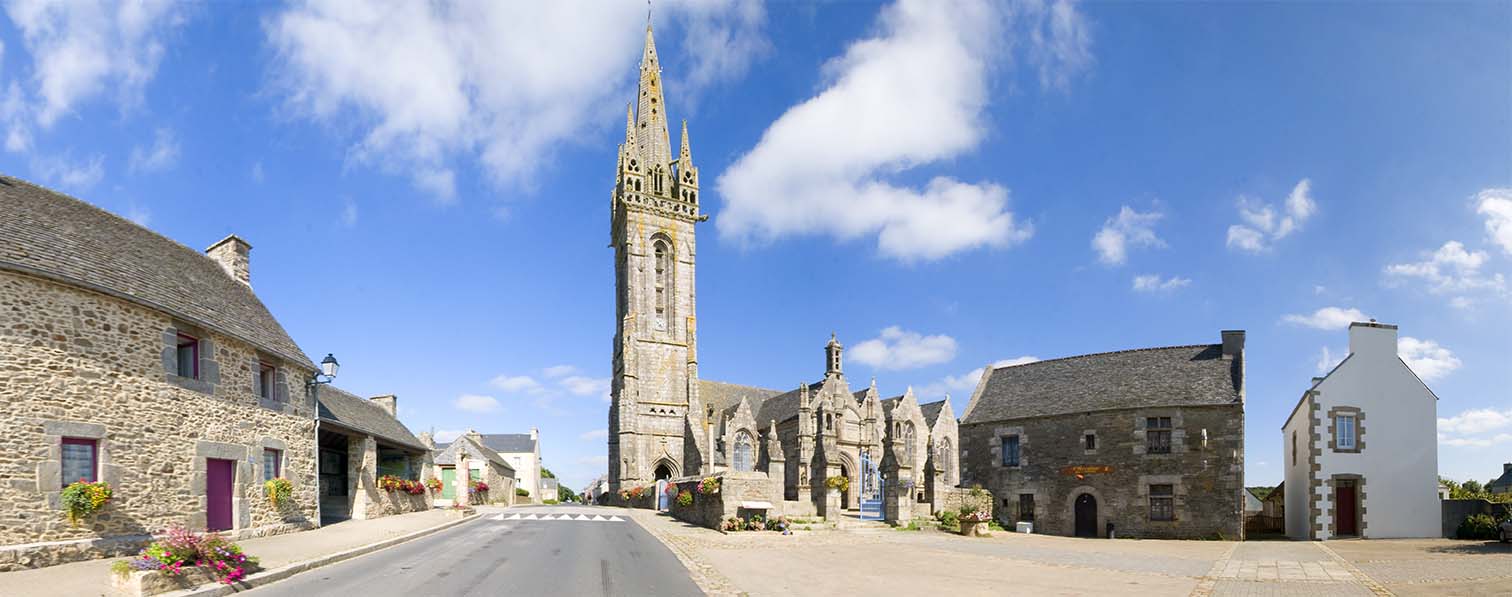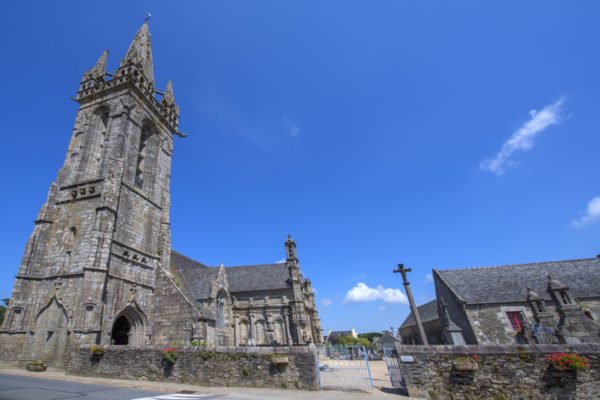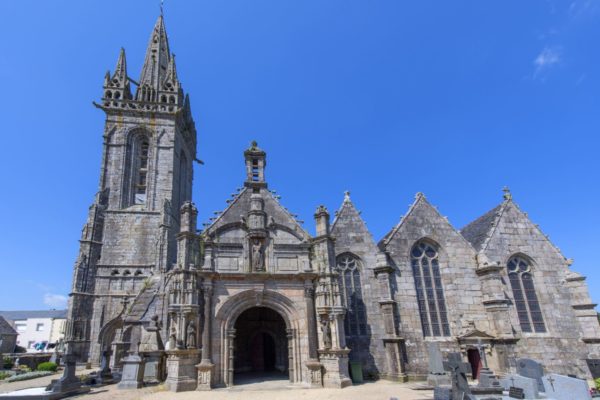It began, however, with conformity to the best Gothic designs : a chevet with openwork friezes on the gable slopes (1564) and above all a bell-tower (1570) inspired by the Kreisker chapel at St-Pol-de-Léon. From the plateau of Léon, which it still dominates, it was this tower which formed the starting point for the great bell-towers, and the valley area would also follow suit in using this style without delay (Lampaul-Guimiliau, Landivisiau, Commana, etc.).
A few years later, thanks to the chateau of Kerjean, we find a new way of building and completely different styles – pediments, banded columns, Corinthian capitals, stone lantern ornaments – conforming to the latest fashions of the royal construction sites. Bodilis adopted these with enthusiasm and the Gothic church soon found itself surrounded by Renaissance finery of exceptional profusion. A piece of bravado, the porch (1585-1601) is even decorated right up to the exterior walls.
The gaze of the Virgin, the angel of the Annunciation and the long faces of the Apostles welcome the visitor. Impressive in their solemnity, they overlook a teeming crowd of faces, lions’ muzzles, grotesque masks, the whole thing being balanced by pilasters, cartouches or interlaced motifs. How extraordinary this would have been if the porch still had its original colours ! This Renaissance abundance can also be found in the interior of the church where the carpenters expressed themselves joyfully with more than 100 metres of string-beams, 14 beams and 20 tie-pieces, all extremely crowded with detail of religious, mythological and profane inspiration. But like the Apostles in the bustling activity of the porch, the five altarpieces provide order in their attractive arrangement and the pleasant certainties of an illustrated catechism.


